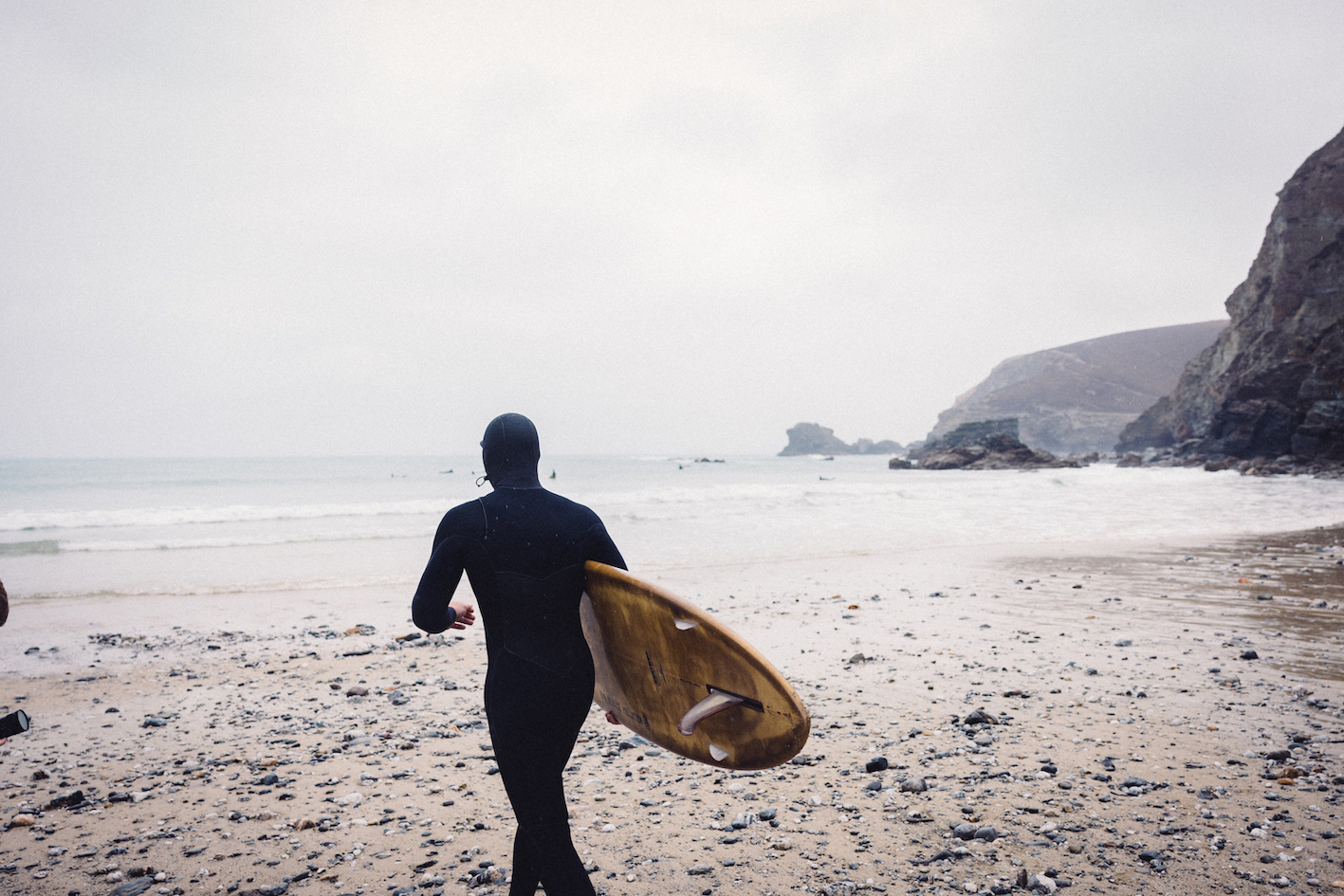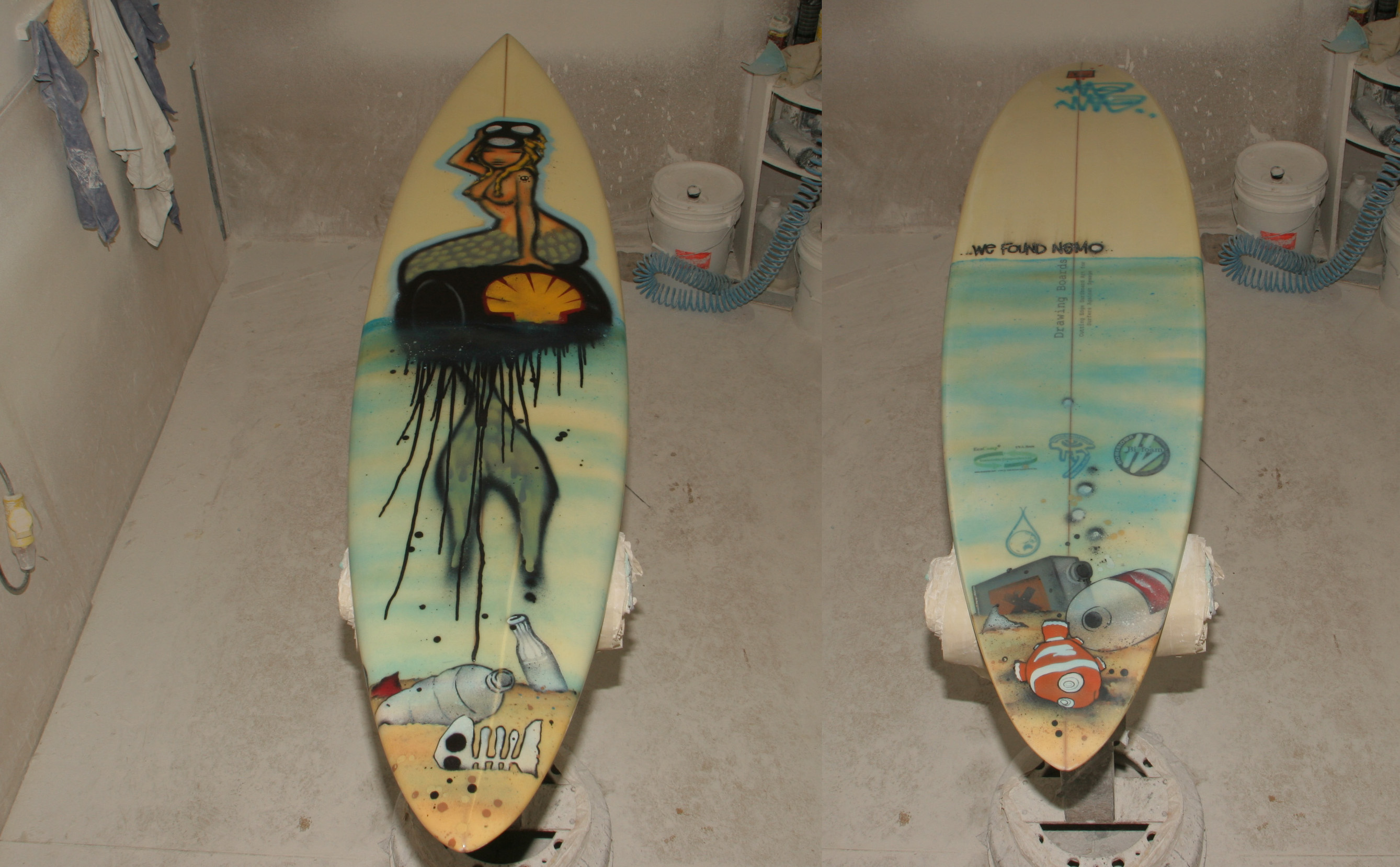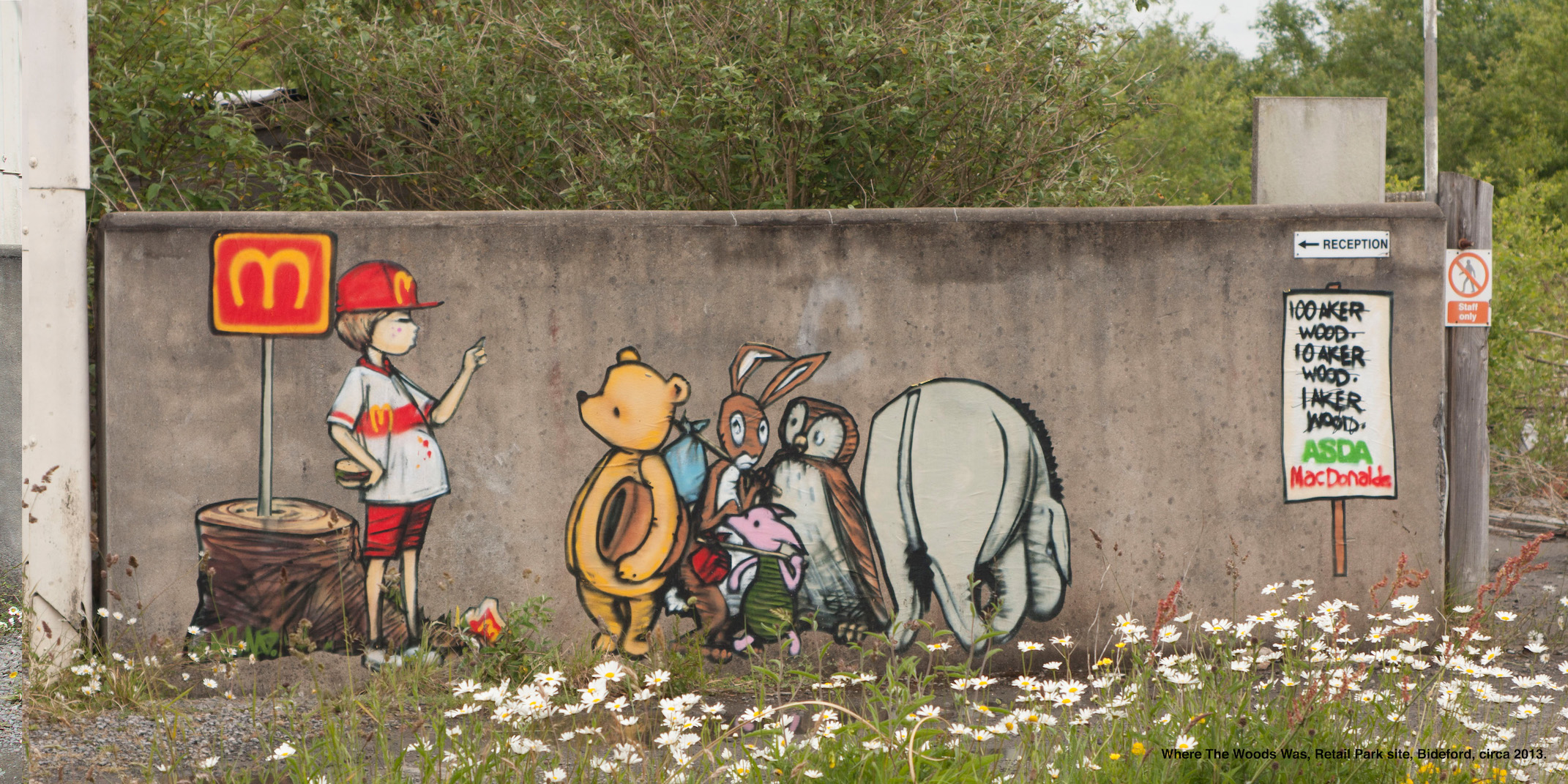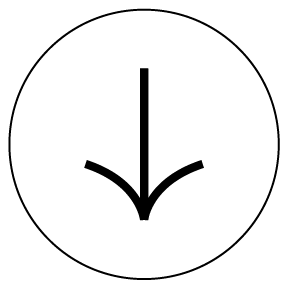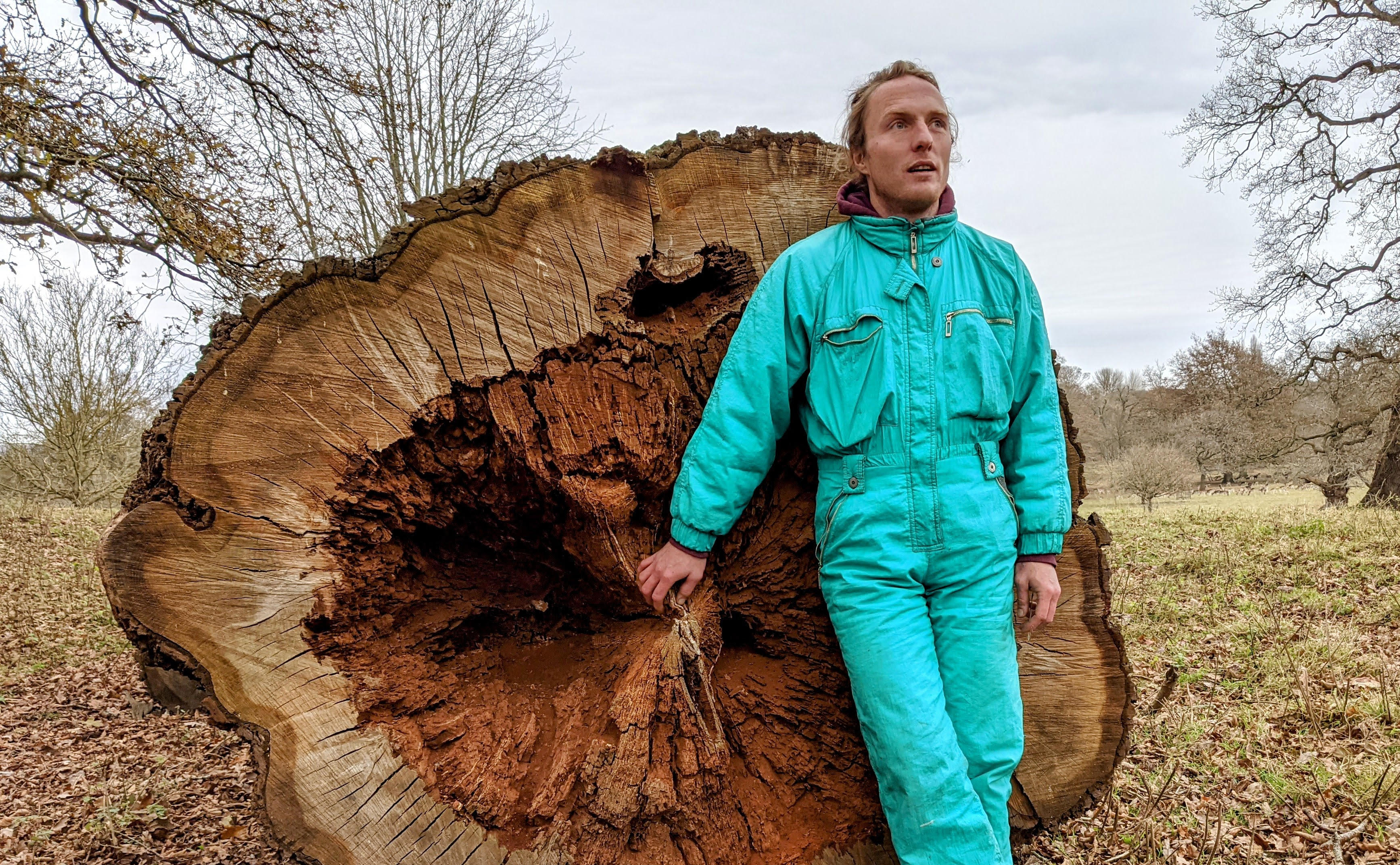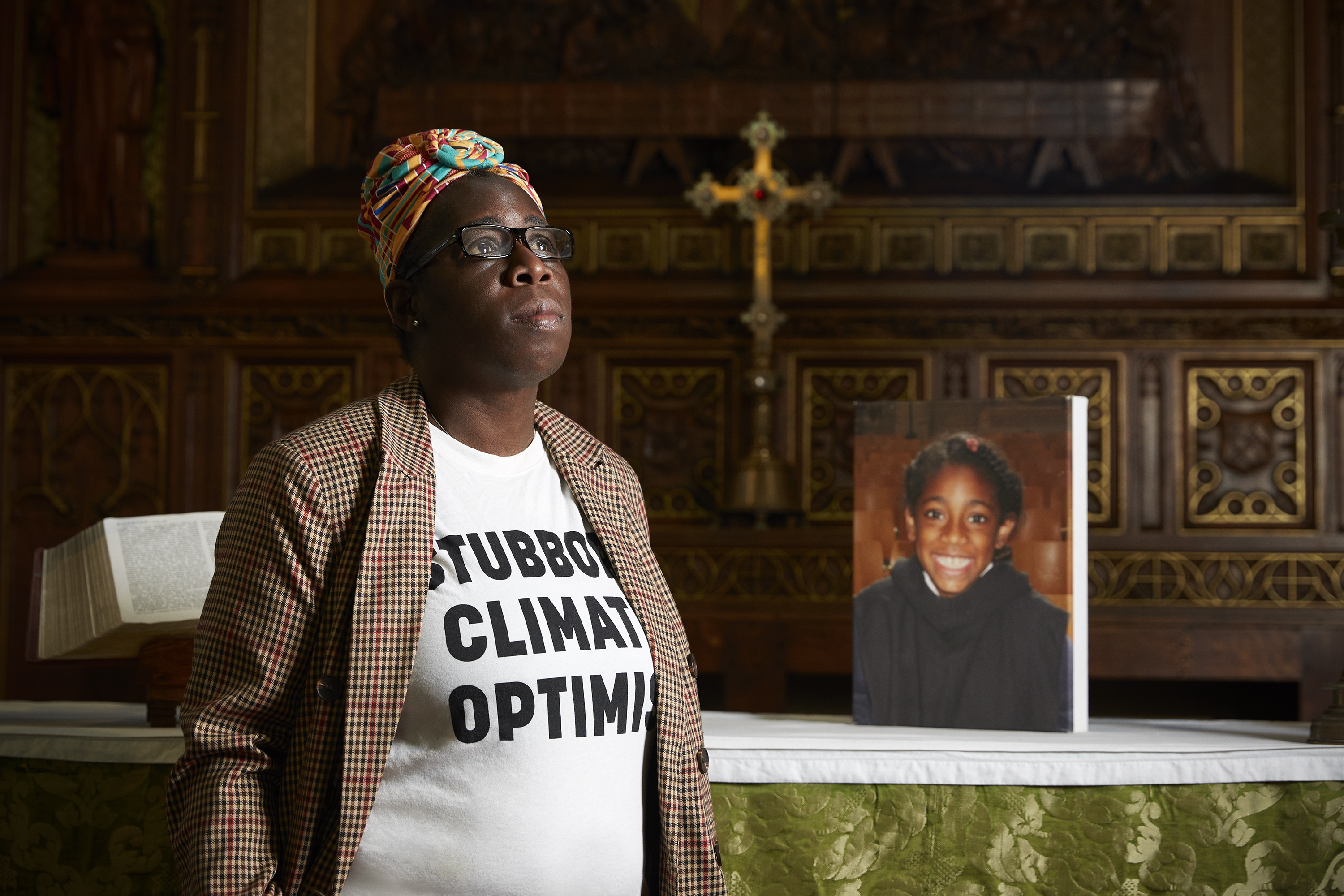Sewage isn’t the only unusual material in Niall’s studio: he’s also worked on boards from recycled parts. His focus on ‘waste’ materials puts him in good company, recalling the work of artist Ithaka Darin Pappas. Beginning in 1989, artist Darin Pappas created a set of sculptures called The Reincarnation of a Surfboard. Produced from recycled surfboard components, the sculptures are unified by dark blue shades and oceanic iconography.
More recently, in 2013, Lou McCurdy and Chloe Hanks installed the TruCost Super-M-Art in ONCA, Brighton. Recreating a supermarket, McCurdy and Hanks lined shelves with plastic waste gathered from UK beaches. These works grant visibility to unseen consequences lingering at the peripheries of our culture. They also grant waste products new value, inverting the decay at the heart of unbridled consumerism; giving, as Darin Pappas puts it, ‘new life to the discarded’.
Surfers against sewage
TruCost and The Floater were both part of a collaboration with Surfers Against Sewage (SAS), a campaign group formed in 1990. SAS relies on artists to raise awareness and funds for their work. Where The Floater sends what SAS calls a ‘middle finger’ to water companies, boards by artists like Damien Hirst, Banksy, and Jamie Hewlett, bring in funding at auction.
Tim Nunn, Communications Manager for SAS, says: “We take our campaigns from beachfront to front-bench. Whichever way decision-makers look, we want them to be confronted with our stand against the sewage pollution crisis."
The surfboard remains at the centre of SAS’ art campaigns. Like a protestor’s placard, the board is a constrained canvas where artists have to be succinct and snappy. Linked to the natural world and bolstered by surf’s countercultural roots, the surfboard has real political potential.
Among the artists to design boards for SAS is street art veteran Mau Mau. Like Niall, Mau Mau recalls his own watershed moment: “I began surfing over 30 years ago,” he says. “Our local break was at the end of a sewer-pipe. We used to surf among sewage, tampons and turds. We suffered ear and throat infections.
“I started doing designs about it on T-shirts, with slogans like 'eat shit and die'. I always loved skate and surf culture, so it made sense to put my images onto boards.”
One of Mau Mau’s boards, designed for SAS, depicts a mermaid atop a Shell oil barrel. The image echoes The Birth of Venus, with Botticelli’s giant scallop shell transformed into a corporate logo. On the back of the board, a dead cartoon clownfish drifts among leaking barrels. A dire epitaph reads ‘we found Nemo’. The contrast between the idyllic (though corrupted) motif on the board’s front, and the stark imagery on the reverse, aptly reflects the sewage crisis. To sustain an enticing status quo, undesirable elements and inconvenient consequences are pushed out of sight.
It's not the only time Mau Mau has put an environmentalist spin on Disney characters, somehow evading litigation in the process. In another work, he shows Winnie the Pooh living outside McDonald’s, evicted from a bulldozed 100 Acre Woods. Mau Mau describes his use of pop-culture characters as a means of revealing ‘harsh reality’: “I like to use famous characters, as they have an existing narrative I can twist.”

